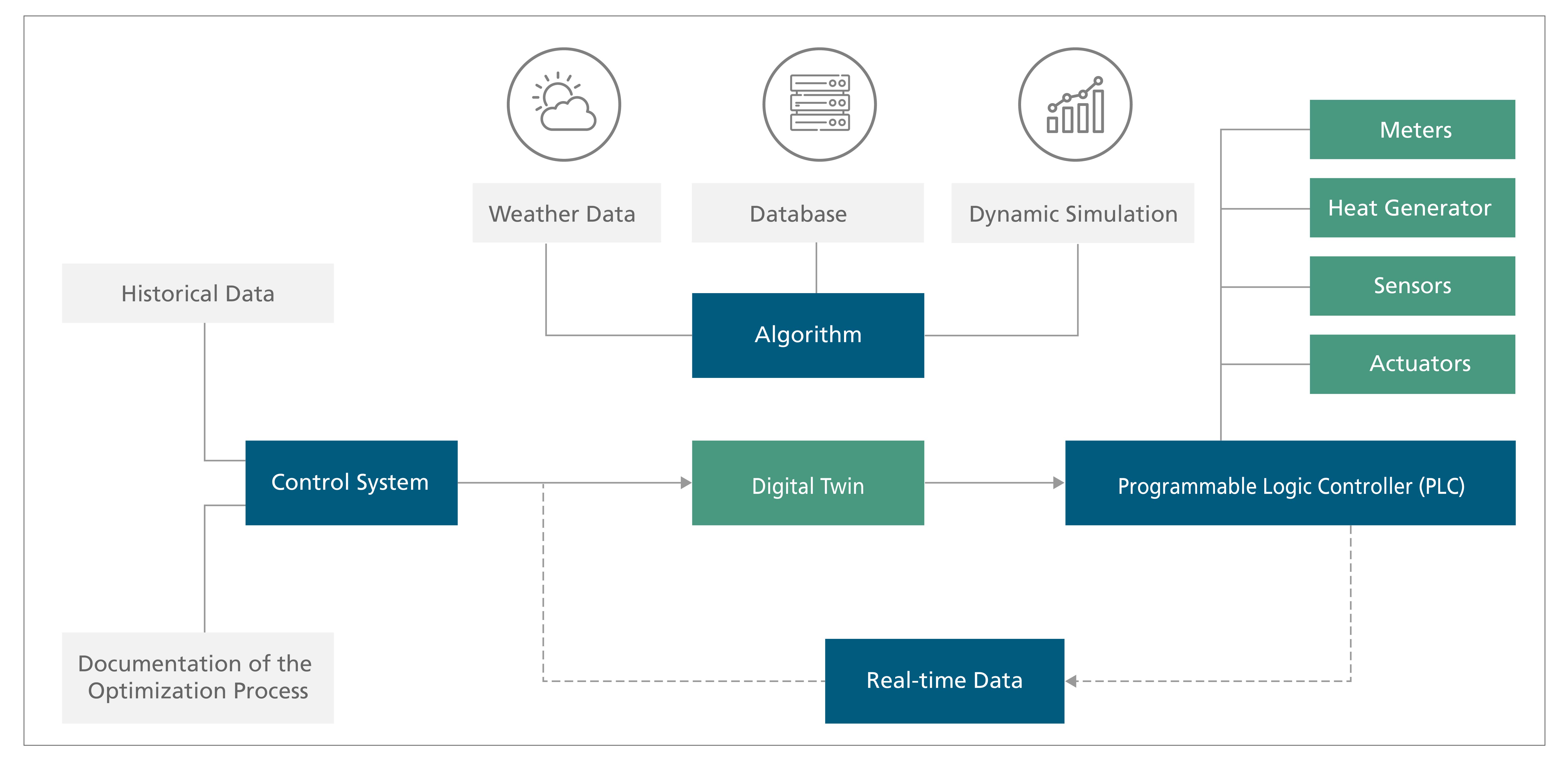Innovative, AI-supported technologies for plant operation and drive technology help to plan energy requirements in advance and to control them optimally. Our researchers develop and implement methods to intelligently monitor and automate plants. In this way, we save energy and costs.
Optimizing Processes in Heat Generation Plants With Artificial Intelligence
Artificial Intelligence Saves Energy and Costs
In a pilot project, our team identified solutions for the Cologne-based energy supplier RheinEnergie to optimize heating plants on the basis of historical data records and specifications. The goal is to save primary energy – especially gas. The second phase of the project focuses on implementing the algorithm in the plant technology and its implementation. We then validate the results.
We provide our project partner with holistic support, from the development of the methods to the integration of hardware and software in the control cabinet, to enable resource-efficient plant operation.
Estimating the Savings Potential With a Digital Twin
First, our team uses Machine Learning methods to create individual, weather-related load profiles at the grid transfer point. These can be used to forecast heat demand, but also contain other important information. In this way, we identify influencing variables and sharpen the focus for normal or abnormal consumption.
In parallel, operating processes of the individual functional units are modeled and the parameterization is adapted to existing historical data sets. The digital twin of the plant developed in this way serves as the basis for subsequent resource-optimizing control.
In this way, we make the target variables more flexible on the basis of predicted load profiles and improve the operating mode within the heat generators with regard to these load profiles.
From the Model to the Validated Controller
The load forecast and the Digital Plant Twin form the basis for the analysis of the local heating network and the operational optimization.
For this, we implement the following points:
- Demand-driven heat production: We create an algorithm that compensates for the feedback delay based on the load forecast. This arises due to the network lines of the heat network. We ensure that deviations in the supply temperature are reduced and heat energy is not unnecessarily pumped in circles. The amount of heat generated is thus optimally adapted to the dynamic consumption behavior of the consumers.
- Control of heat generators: Taking load forecasts into account, it is possible to optimally control when which generator should provide which heat output in order to save primary energy.

For this purpose, we develop a Digital Twin of the plant according to the minimal principle, supported by modern measurement sensor technology. In the end, the Digital Twin is therefore accurate enough for the application, but not too extensive. In addition, we build suitable control methods, such as model predictive control, always keeping consumption forecasts in mind.
We transfer the developed control algorithms to a suitable target platform and integrate the control into the existing Programmable Logic Controller (PLC).
